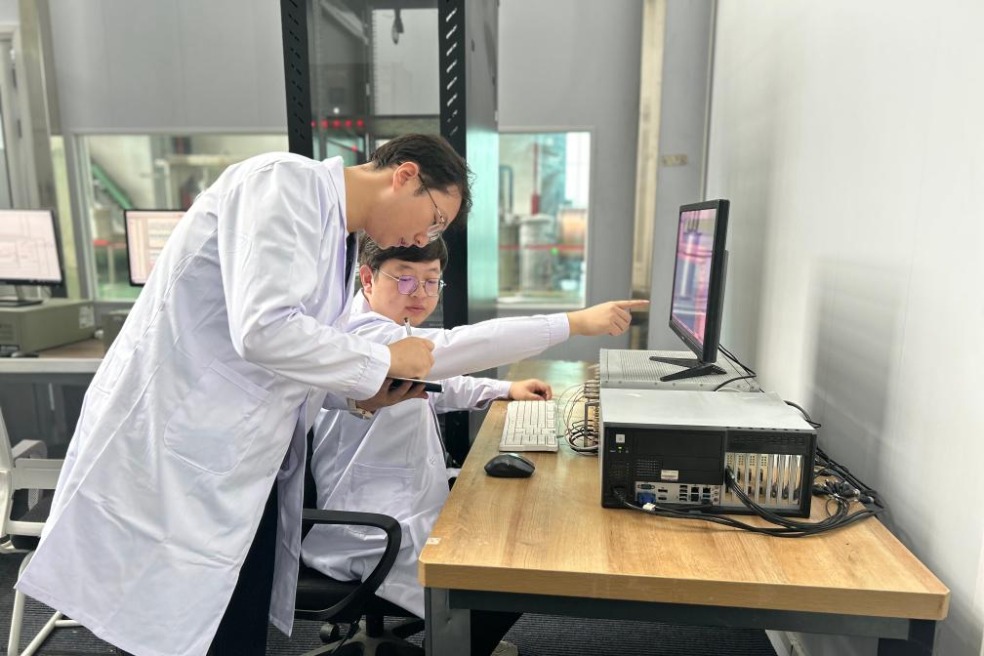Shanghai targets global hub for high-end medical devices

Shanghai has announced ambitious targets to establish itself as a globally influential hub for high-end medical device development by 2027, including securing more than 500 new domestic registrations of Class III medical devices and over 100 approvals of medical device products in overseas markets.
The goals are outlined in an action plan for promoting the full-chain development of the high-end medical device industry recently released by the Shanghai municipal government. The plan also sets a target of fostering two industry-leading enterprises, each with an output value exceeding 10 billion yuan ($1.41 billion) by 2027.
Class III medical devices are the highest-risk category under China's management system because they typically support or sustain human life. Examples include artificial heart valves, vascular stents and orthopedic implants.
Manufacturing output of the city's high-end medical device sector reached 55.51 billion yuan in 2024, accounting for 27.6 percent of Shanghai's biopharmaceutical output, according to data from the Shanghai Science and Technology Commission.
Experts said the new development goals will accelerate research, industrialization and clinical application of cutting-edge technologies such as brain-computer interfaces, surgical robots, next-generation proton knives and AI diagnostic systems in Shanghai and beyond.
The action plan sets out 20 tasks spanning innovation, clinical empowerment, regulatory approval, hospital application, enterprise cultivation, industrial ecosystem and international development. It highlights eight key product categories: high-end medical imaging products, implantable devices, surgical systems, in vitro diagnostic products and artificial intelligence medical devices, among others.
"Key product categories also include new innovative devices for the future," it said. "Efforts should be accelerated to develop future therapeutic products like micro-nano robots for precision diagnostics, future diagnostic products based on technologies such as quantum and nucleic acid mass spectrometry, and products like brain-inspired intelligence."
The plan also seeks to strengthen innovation by advancing key materials and core production processes, reinforcing supply chain resilience and expanding AI applications.
Shanghai United Imaging Healthcare, which specializes in medical imaging, radiotherapy equipment and life science instruments, is a prime example of the city's ambitions. Its products are present in nearly 90 countries and more than 15,000 institutions. The company aims to advance China's high-end medical equipment from local leadership to global coverage through a strategy of independent innovation combined with ecosystem co-building.
Cai Tao, the company's chief investment officer, said a crystal material used in PET-CT machines — long monopolized by Europe and the United States and accounting for half the machine's cost — had been localized through collaboration with a domestic company.
"We achieved breakthroughs in raw materials, technology and mass production, reaching international performance standards. This helped reduce the cost of domestic equipment and drive the upgrade of related domestic industries, including optoelectronics and precision machining," Cai said.
The plan also stresses promoting the integration of medicine and engineering, and creating a mechanism to link industry, academia, research and healthcare.
Shanghai's Ruijin Hospital has provided a model for this crossover, facilitating clinical implementation of 12 technologies since 2023, including a noninvasive blood glucose monitor and domestically developed surgical robots. The hospital's innovation center hosts 10 research institutes and labs.
One breakthrough, a palm-based monitoring device that measures blood glucose levels, has completed pretrials and clinical trials with hundreds of diabetic patients and healthy individuals, said Chen Chang, director of the hospital's medical chip research institute.
"In the future, this technology will be expanded to noninvasive detection of other biochemical indicators, potentially reshaping the chronic disease management model," Chen said.
To support reforms and pilot programs, the action plan proposes enabling local production of imported Class II and III medical devices by foreign-invested businesses that already hold Chinese registration certificates, and exploring pilot use of devices marketed overseas but not yet registered domestically.
The plan also makes it clear that Shanghai supports foreign enterprises in setting up regional headquarters, R&D centers and production bases in the city. It encourages them to conduct research and production of innovative products simultaneously with the global market or as a first launch in China.
Today's Top News
- Renewed talks on Gaza peace welcomed
- Pressure on Macron rises as PM resigns
- China's pledge sets green stage for ASEAN
- New policy targets EV exporters
- France's PM resigns after less than a month in office
- Chinese scientists discover colder lunar mantle on moon's far side






























